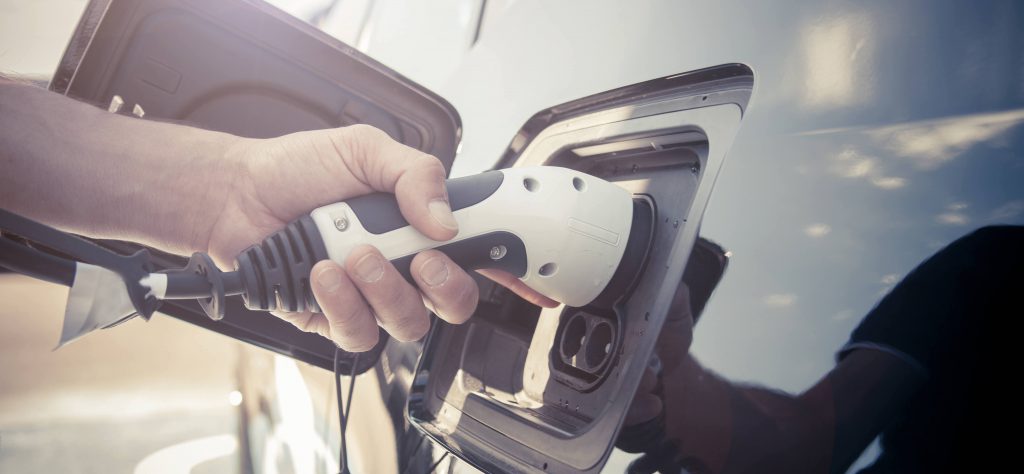 20 September 2018
20 September 2018
The national government strongly encourages the purchase and use of electric vehicles. All sorts of different arrangements have made it a lot more attractive for many to drive an electric car; business or private. By going electric, you won’t only reduce your CO2 emissions, you’ll probably save a lot of money as well!
There’s a bunch of advantages, but what does electric driving really mean?
Electric driving, non-business
The BPM, which is the tax on passenger cars and motor vehicles, is based on the CO2 emissions of the vehicle. The more emissions, the more BPM you’d have to pay. Since electric cars do not emit any CO2, you don’t have anything to pay any BPM when buying an electric vehicle.
In 2017 the consumer received a subsidy of € 6,000 through a national scheme when purchasing a new plug-in hybrid; unfortunately, this is no longer possible. On the other hand, there are local schemes in various municipalities that encourage the purchase of plug-in hybrids and fully electric vehicles. Think of subsidies for free charging stations near your home.
ING told the NOS that in 2024 electric driving will be cheaper per kilometer than driving on petrol; depreciation, charging costs, maintenance and repairs included. We are not surprised that 37% of all Dutch consumers say they are looking to drive an electric car within the next 5 years.
Are there also disadvantages to electric cars?
Purchasing an electric car is for many people still too expensive. For instance, the Nissan Leaf, which is the second most popular electric car after the Tesla Model S, will cost you at least € 37,000. Since it is a fairly new market, the trade in electric second-hand models isn’t as big as the trade on petrol cars.
Despite the high purchase price of electric cars, there are plenty of alternatives to still be able drive an electric car. Private lease, for example, makes driving of a new electric car accessible to many! Instead of purchasing a car, you’ll drive a new car for for a fixed monthly fee.
The price for private lease depends on the amount of kilometers and the contract duration. This can be flexible, but obviously, you’d have to pay more for a shorter contract duration and more kilometers driven.
Another disadvantage is the fact that many electric cars have a fairly low range. Since charging your battery takes time, you might have to get used to planning this into your journeys. For instance, the Tesla Model S, with 500km range (that’s from Amsterdam to Paris) needs about 8.5 hours to fully charge. Are you on the go? You might find a quick charger; in about half an hour your battery will be recharged to a reasonable 80%. This should be enough to finish your journey with peace of mind!
Business driving an electric car
The low additional tax liability on electric vehicles make it attractive for many business drivers to lease an electric car. The additional tax liability on fully electric cars is 4%; on plug-in hybrid and on conventional cars, you’d have to pay 22%.
Electric vehicles (and charging stations) are on the environmental list; this means that the purchase of those products is seen as an investment in environmentally friendly assets. To stimulate this, the government has created the MIA: the environmental investment allowance. The MIA is an expense that you, as an entrepreneur, may deduct from your taxable profit. This arrangement allows you to specify 36% of the costs as ‘business costs’, to a maximum of €50.000 on passenger cars, and €75.000 for vans
What about subsidies? As stated earlier, subsidies are arranged locally; this may vary per municipality. In The Hague, for example, you’ll receive a subsidy of € 5,000 when purchasing a new electric delivery van. When purchasing a second hand one, you’ll still receive a reasonable € 3,000. The municipality also provides you with a charging station in your neighborhood, for of charge.
Hyuandai Kona Electric Vs. BMW X1
We’d like to give you a clear picture of the amount of money you may save when driving an electric car. That’s why we’ve made a comparison between the new Hyundai Kona Electric and the BMW X1 sDrive18i.
The Hyundai Kona Electric and the BMW X1 sDrive18i are both SUVs with a consumer retail price of approximately € 45,000; we thought it would be a fair comparison!
The calculation is based on a personal contribution of € 0.-.
|
Hyundai Kona Electric Premium 64 kWh
|
BMW X1 sDrive18i
|
|
|---|---|---|
|
Suggested retail price
|
€44.995 | €46.043 |
|
Fiscal value
|
€44.115 | €44.739 |
| BTW 21% |
€7.656,32
|
€6.487 |
| BPM | €0 | €7.359 |
| MIA | -36% | n.v.t. |
| Additional tax liability | 4% | 22% |
| Monthly costs tax liability (income bracket 3) |
€60,07
|
€344,82 |
| Monthly costs tax liability (income bracket 4) | €76,47 | €438,52 |
Choosing a Hyundai Kona Electric above a BMW X1 will save you € 3,417 in tax bracket 3 on an annual basis, and even € 4,344 in tax bracket 4!
Figures electric cars
The number of electric cars in the Netherlands has risen from 29,000 to 120,000 in only four years. As a result, The Netherlands is the country with the second most electric cars. Among the fully electric cars, the Tesla Model S is still the most popular car, followed by the Nissan Leaf.
To what extent have all these schemes influenced the development of Dutch fleets? At present, 45% of all companies indicate that they (want to) own a fully electric vehicle now (or within 3 years). With 45% of all fleets being partly electric already, the Netherlands is the European leader in the implementation of fully electric vehicles in vehicle fleets, followed by Great Britain (42%) and Germany (37%)*.
Figures charge points
At the moment there are more than 18,400 public charging stations in the Netherlands; 16,500 semi-public and nearly 1000 charging stations suitable for fast charging. This is a 22.4% increase in only one year!
On average, there are 3.8 charging stations per 1000 cars in The Netherlands. In Amsterdam for example, there are even 15,5 charging points per 1000 cars! It is expected that another 25,000 charging stations will be added in the next 2 years. The Netherlands proudly owns 28% of all charging stations located in the European Union and can therefore rightly call itself a forerunner in the sustainability of the mobility sector!
In general, the developments are therefore very positive, but according to the European Automobile Manufacturers Association (ACEA), it’s not enough yet. The trade association indicates that Europe must brace itself for the revolution that the electric car will bring, expected in 2025.
What does the future of electric driving look like?
The central government aims that in 2025, 50 percent of the newly sold cars are equipped with a plug and that at least 30 percent of them are fully electric. The target for 2030 is even that every new car that is sold in the Netherlands is an electric vehicle!
We can only hope that the sustainability of the mobility sector will indeed go as fast as expected, and that the emissions that the sector is currently causing will quickly decrease.
*fleet barometer

